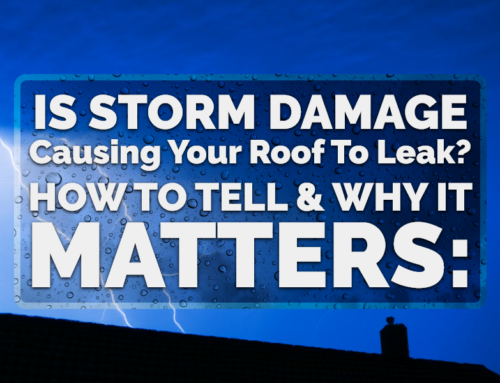Every back yard pool in town is stacked wall to wall with kids, the sweet smell of SPF 50 in the air. The grass grows twice as fast and the ice cold drinks melt even quicker – you know summer is in full swing in Cincinnati. High humidity and rising warm air are the perfect recipe for frequent thunderstorms. As your home’s first line of defense, regularly inspect and maintain your roof to ensure it is prepared to withstand wind, rain, hail, and other environmental factors. A visual inspection every six months can help you notice issues quickly. Catching small issues early can prevent larger problems later!
1. Inspect Your Roof
For your safety, never climb on your roof without proper safety attire. Most roof inspections do not require climbing on your roof. Even without walking on your roof, you can detect many issues. Proper inspections and maintenance can catch small issues, before they cause greater damage. If you feel there could be an issue that will require accessing your roof, always call a roofing professional like Titan Siding and Roofing to assist.
What to look for:
- Visible damage – Asphalt shingles missing granules, curling, or bending, missing or broken shingles, dirt and debris, standing water, blocked drains, gutters, or downspouts, cracked caulk or rubber, large amounts of vegetative growth (moss, algae, etc.), or clogged gutters. Anything that looks damaged to you could signify an existing or potential problem!
- Exterior Fixtures – Check for leaks, damage, missing parts, cracks, rust, or rot on and around chimneys, vents, fascia, drip edged, decking, skylights, etc. Keep in mind that each roof is slightly different from all others, so your roof may have additional features or crevices you will need to inspect.
- Interior Roofing Components – From inside the house, be sure to visually inspect damage caused by leaks. Water spots are a good indication of an exterior roof leak. Remember, the location of the leak inside may not be the source of the leak outside. Call your local roofing company to safely find the source of the leak from your rooftop.
2. Clean Your Gutters
Regularly cleaning leaves and debris from gutters allows water to flow away from your roof. Clogged gutters can allow pooling on or next to your roof, leading to added weight and moisture damage. Wet leaves and debris may not show damage to shingles or the outer layer of your roof, but can deteriorate the under layers. Gutters are designed to divert water from your house, and cannot effectively do so when they are full of leaves or other debris. Homes with tall trees and foliage close to the house may need to clean gutters more frequently than those without. Keep in mind, strong winds may blow debris onto your roof or gutters, even if trees are not next to your house.
3. Trim Foliage
Trimming branches and other foliage around your house not only helps keep gutters clean, but also prevents large limbs from causing damage to your house during a storm. Broken or fallen limbs can cause cracks in your roof, or premature deterioration from added weight. Leaves and twigs piling on your roof can also trap water, holding in excess moisture. Moisture can lead to vegetative growth, weakening and decomposition of the roof, and can also be an eyesore if the decaying leaves are visible at ground level. Summer storms often bring high winds, causing nearby trees to brush against your roof and house. Trimming branches will minimize damage caused by limbs brushing against your home.
4. Make Repairs
Be sure to take note of and fix any issues in a timely fashion. Fixing problems early, and staying proactive, can extend the longevity of your roof, and minimize damage if it does happen. If there is any question whether or not a problem is safe for you to fix yourself, remember to stay safe, and consult your local roofer.
EXTRA TIP: Secure Exterior Furnishings
Remember to check and secure other outdoor home décor and furnishings. Patio furniture, hammocks, umbrellas, lanterns, lights, flower pots, etc., can also be affected by wind, rain, and hail from Summer storms. Securing, covering, or bringing these items inside before a storm will help reduce the potential for damage caused to and by these items. Nothing is more embarrassing than chasing a prized Cleveland Cavaliers flag down the street – LeBron or not.






